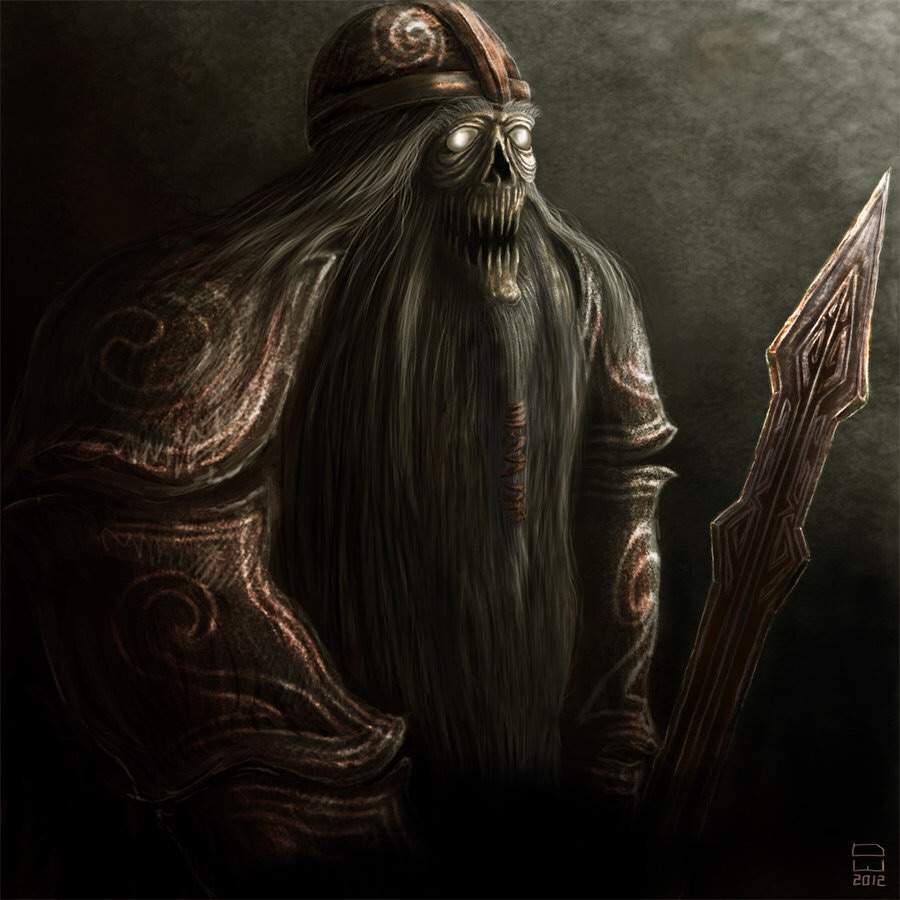
The mid-season return of The Walking Dead on AMC is upon us, and zombies are once again in the spotlight. But did you know that zombies are not the only creatures to reanimate? Here are 7 still kicking Undead Creatures…
1. Vampire

The idea of a vampire is shrouded in mystery and seduction. Armed with a taste for blood and two fangs, these humans turned into the undead have an unquenchable thirst. The vampire first appeared in mainstream western culture in 1819 with the publication of The Vampyre by John Polidori which preceded the grandfather of all vampire tales – Bram Stoker‘s 1897 novel Dracula. The roots of the vampire mythology seep from most cultures around the world with folklore of witches who consumed blood, or dead humans whose bodies were jumped over by an animal while awaiting burial.
Much like the witch hunt in 1600s New England, parts of the U.S. experienced mass hysteria regarding vampires. “The public hysteria almost invariably occurred in the midst of savage tuberculosis outbreaks,” writes Abigail Tucker of the Smithsonian Magazine. “…the survivors blamed early victims as “vampires,” responsible for preying upon family members who subsequently fell sick. Often an exhumation was called for, to stop the vampire’s predations.”
2. Draugr
This grave warrior hails from Norway, Sweden and Denmark. Its name literally means “again-walker.” This undead creature is an entity who guards the graves of soldiers, keeping grave robbers and desecrators away. Legend tells us that those who are mean-spirited or evil while living will be the most likely to become a Draugr in the afterlife. One can become such a creature by interaction, passing along the curse much like one vampire or werewolf turning living humans into their kind. In more recent western culture, the Draugr can be spotted in Tolkien’s The Lord of the Rings and video game franchises Skyrim and The Witcher.
3. Pontianak

Not be be confused with the city in Indonesia, a Pontianak is a woman who dies tragically during childbirth. She comes “back to life” in order to feed on men and attack women who are pregnant out of sheer jealousy and grief. This undead creature originates from Indonesia but is prominent in Indian, Bangladeshi and Pakistani cultures. They are usually seen wearing white and have long, straight black hair. In order to survive, the Pontianak digs its claws into a living person to eat its organs, making itself stronger at their ultimate expense. How do you avoid this creature? Don’t leave your laundry hanging outside. It is said that she can smell the living by following the scent of clothes on a line moving in the wind. So bring your clothes in before nightfall and you will hopefully be just fine.
4. Zombie
The first ever mention of a “zombie” was in 1819 by poet Robert Southey through A History of Brazil. The idea of the “reanimation of a human corpse” is tied to South and Latin America, Haiti and the Caribbean, and West Africa among other regions of the world, though most give credit to Haitian voodoo. The zombie became a subject in literary form in such early works as W.B. Seabrook’s The Magic Island published in 1929. Time Magazine wrote that Seabrook’s work “introduced ‘zombi’ into U.S. speech.” Since then, zombies in fiction have become a staple of the horror genre, stemming from Mary Shelley’s Frankenstein to Wade Davis’ The Serpent and the Rainbow and George A. Romero’s Night of the Living Dead (1968).
You can read much more extensively about Zombie folklore in ‘Life Expectancy of a Zombie’ or by clicking here.
5. Jiang Shi
This supernatural creature is easily noticeable due to its clothing. Often dressed in official robes of the Qing Dynasty of China, this east Asian folklore tells of a reanimated corpse who travels by hopping to its next victim. That’s right. It hops. Some call it the “hopping vampire” who hops after its victims at night to feed on their essence.
How did this hopping dead come to be?
The story goes that a family who could not bring their dead relative home to be buried asked a priest to reanimate the body so that it could hop home. During the Qing Dynasty, it was not uncommon for the bodies of Chinese workers to be returned to their place of residence or birth so that the soul could rejoin its ancestors. “The coffins were attached to bamboo poles that rested on the shoulders of two men. As they went on their journey, the bamboo poles would flex. Viewed from afar, this would look as is the dead were bouncing on their own accord.”
They are said to have greenish-white and molding skin with long, white hair atop their heads, but then again, there are many versions of the Jiang Shi. Some accounts say they have long claws, sharp teeth and even emit a “green phosphorescent glow.” Even with all that said, should spot one, look away. Setting eyes on a Jiang Shi will bring you bad luck.
6. Myling
Mylings are part of a Scandinavian folklore going back to the days when unwanted children (due to being conceived out of wedlock or to parents unable to care for them) were abandoned in forests or other isolated area, and sadly, left to die alone. Children who like to create a ruckus in order to gain our attention is nothing strange, however, these children are poor souls roaming the land in the hopes of a proper burial. It is said that these unbaptized, deceased children will look for lone wanderers at night and “jump on their backs, demanding to be taken to the graveyard, so they can rest in hallowed ground.” While they ride upon your back, they grow heavier the closer they are to the graveyard, so heavy that they cause their carriers to sink into the ground. And if you are unable to make it all the way into the cemetery to the Myling’s final destination, in a fit of rage it will kill you.
Mylings and other folklore entities can be discovered in ’10 of the Creepiest Folklores from around the World’ or by clicking here.
7. Wila

Beautiful and mysterious, these nymph beings are trapped in the world between the living and the dead. The Wila originates from Poland and has influenced many stories throughout centuries of folklore. Wila are once living women who died “unbaptized or the betrothed ones whose lives ended before marriage.” They are often compared to fairies in their abilities. They are one with nature, able to controll the wind, meshing their appearance with it so that they float, garments and long, fair hair flowing. They may also shapeshift into various animals. Whether in female form or animal, they are the most beautiful of either.
The Wila is also a powerful being and can strike fear and will obedience of men. With a strong voice, they can command men to do their bidding. They also have a taste for vengeance.
How do you overthrow a Wila?
It is believed that plucking a single strand of her long hair is all it will take to subdue her. But be wary. He can easily be angered and kill without a second thought. If you are unable to overcome her, then gifts and offerings of sweets, fruit, ribbons or flowers will do the trick.
-By Christina Persaud
Sources:
- Skal, David J. (1996). V is for Vampire. New York: Plume. ISBN 0-452-27173-8.
- Bunson, Matthew (1993). The Vampire Encyclopedia. London: Thames & Hudson. ISBN 0-500-27748-6
- Jakobsson, Ármann (2011). “Vampires and watchmen: Categorizing the mediaeval Icelandic undead”. JEGP, Journal of English and Germanic Philology. 110 (3): 281–300. doi:10.1353/egp.2011.0056
- Liao, Yiwu. The Corpse Walker: Real Life Stories, China from the Bottom Up. New York: Pantheon Books, 2008.
- Beware the Wandering Wilas. (2014, October 31). Retrieved from http://www.ancient-origins.net/myths-legends-europe/beware-wandering-wilas-002273
- Draug. (n.d.). Retrieved from http://witcher.wikia.com/wiki/Draug
- Fazura relates encounter with ‘pontianak? on movie set – Nation | The Star Online. (2018, February 20). Retrieved from https://www.thestar.com.my/news/nation/2018/02/20/fazura-relates-encounter-with-pontianak-on-movie-set/
- The Great New England Vampire Panic. (2012, September 30). Retrieved from https://www.smithsonianmag.com/history/the-great-new-england-vampire-panic-36482878/
- Kuntilanak (Pontianak): ‘The Ghost of a Woman Who Died While Pregnant’. (2015, January 26). Retrieved from http://www.indomagic.com/articles/mythology/folklore/kuntilanak-pontianak/
- The Living Dead: Chinese Hopping Vampires. (2016, June 8). Retrieved from http://www.ancient-origins.net/myths-legends/living-dead-chinese-hopping-vampires-006050
- Vila. (n.d.). Retrieved from http://warriorsofmyth.wikia.com/wiki/Vila
- Listomaniacs. (2011). Listomania – a world of fascinating facts in graphic detail.






s65zuw
wz6s4t
1otxlx
Ghouls